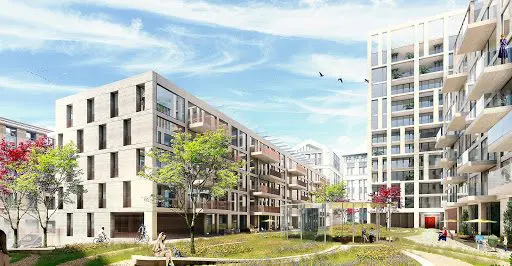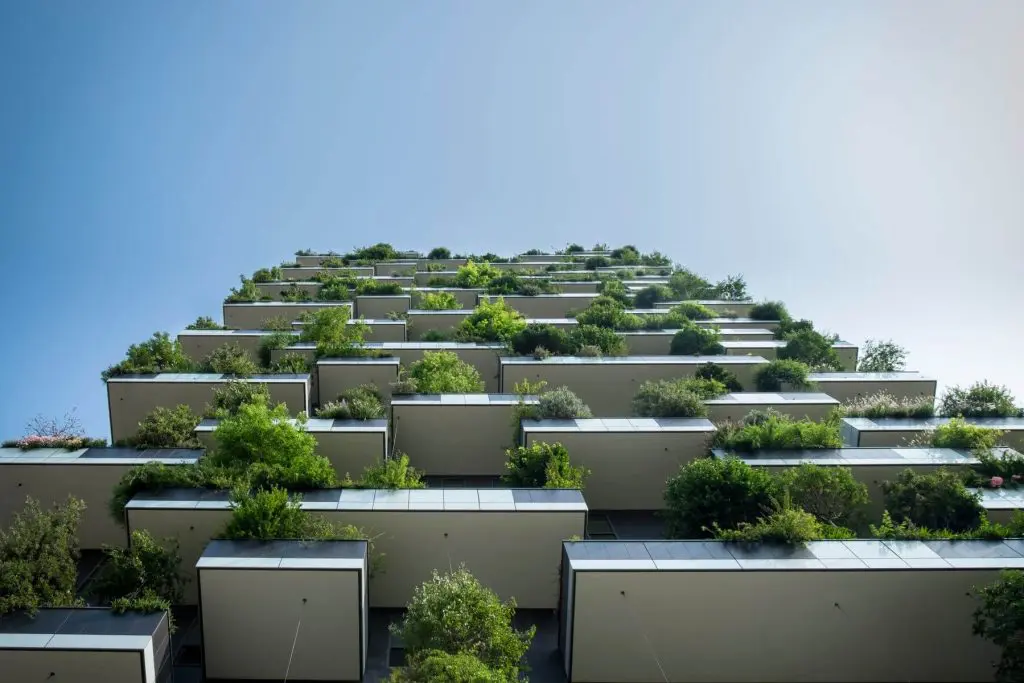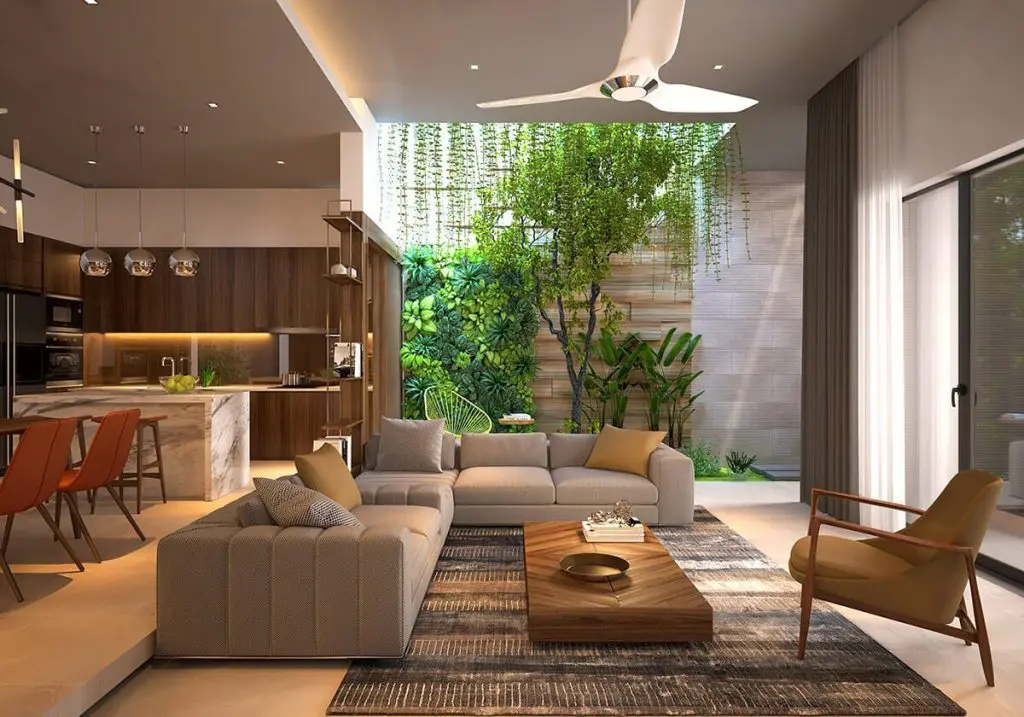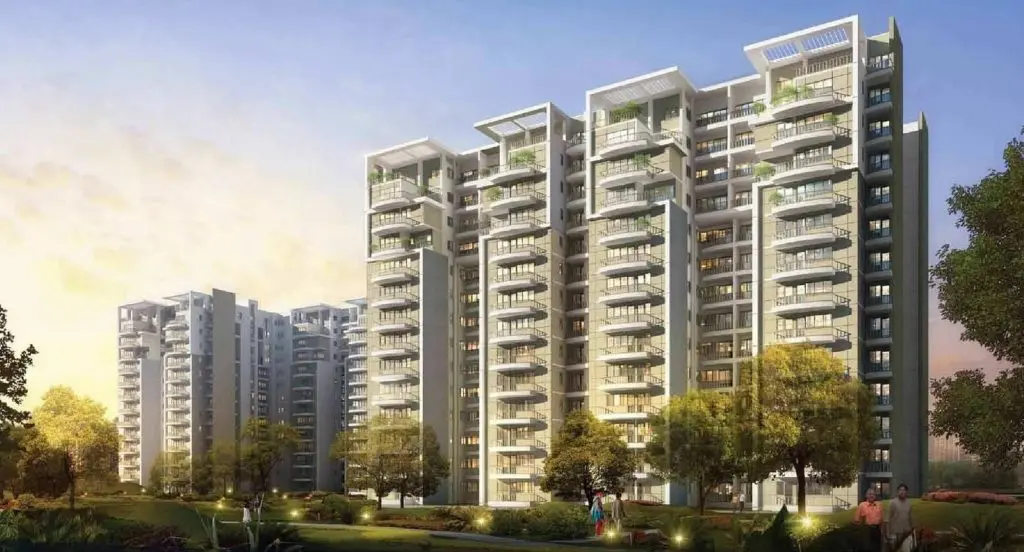Modernization pushed people towards exhausting our natural resources and exploiting the environment. Of course, this applied to buildings as well. The more the cities developed the more harm they caused to our environment.
Buildings have extensive indirect and direct impacts on the environment. During their construction, buildings use energy and raw materials, generate waste, and emit potentially harmful atmospheric emissions. Even after their construction buildings require water, electricity, and generate environmentally harmful wastes.

This compelled American architect Paul Soleri to propose a new concept of ecological architecture in the 1960s. Then in 1990, U.K. launched the first-ever rating system called BREEM. Later, with the development of the LEED rating system and other certifications, green buildings started gaining recognition around the globe.
However, in India, it wasn’t until 2003 when The Green Building Movement in India was started. CII- Sohrabji Godrej Business Centre Building in Hyderabad became the first certified green building in India the same year. Now, almost all the major architectural firms in India have already adapted to following the concept of green building. And, the number of its practitioners is only rising.
What is a Green Building?
There are many definitions of green buildings out there, but what should be the most fitting meaning for it? There is a common misconception that a green building is about having more vegetation than other buildings. However, it is so much more than that. In our opinion, a green building contributes more to the environment than it takes from it.
Using less water, optimizing energy efficiency, using sustainable materials, conserving natural resources, etc, are a few of the qualities that a certified green building possesses. In short, a green building not only provides a healthy environment for the users but also creates a better environment. Why Do We Need Green Buildings?

In India, buildings account for 39% of total energy use, 68% of total energy consumption, 30% of landfill waste, 48% of carbon dioxide emissions, and 18% of total water consumption. With numbers like these, it won’t be an exaggeration to say that India is in desperate need of more green buildings to even out the odds. A green building or an energy-efficient building can reduce energy consumption by at least 40% to that of a conventional building.
When we talk about the need or necessity of something, we look over their advantages, and green buildings have dozens of advantages. Leaving aside the environmental benefits, green buildings provide economic and social benefits as well. Below are the few benefits of green buildings.
Benefits of Green Buildings
Environmental Benefits of Green Buildings
- Enhance and protect biodiversity and ecosystems
- Improve air and water quality
- Reduce waste streams
- Conserve and restore natural resources

Economic Benefits of Green Buildings
- Reduce operating costs
- Improve occupant productivity
- Enhance asset value and profits
- Optimize life-cycle economic performance
Social Benefits of Green Buildings
- Enhance occupant health and comfort
- Improve indoor air quality
- Minimize strain on local utility infrastructure
- Improve overall quality of life
IGBC Rating System
IGBC is short for Indian Green Buildings Council. It was formed in the year 2001 as a part of the Confederation of Indian Industry (CII). IGBC offers a wide variety of services, including developing more new green building rating programs and certification services. The council aims to usher in a green building revolution in India.

What are the Different Certifications under IGBC
There are a total of four levels of certification under IGBC: Platinum, Gold, Silver, and Certified. These levels are awarded based on the total credits earned. These credits are earned upon meeting certain mandatory requirements. These ratings are only valid for 3 years, after that, the project is again registered for certification. Below are the points for each certification level and their recognition in the industry.
1. Certified
Points: 51-60
Recognition: Best Practices
2. Silver
Points: 61-70
Recognition: Outstanding Performance
3. Gold
Points: 71-80
Recognition: National Excellence
4. Platinum
Points: 81-100
Recognition: Global Leadership
What are the 5 Main Criteria for Green Building Certification?
Although a green building needs to fulfill various standards depending on the type of project and what certification it is applying for, there are a few criteria that every green building must follow.
1. Sustainable Design
First and foremost, a green building is that is created through sustainable development, without damaging the existing eco-system. Though it is easier said than done, some designs follow it to a certain level.
By reducing the negative impacts on the environment, a sustainable design improves the building performance, as well as provides better health and comfort for the users.
2. Water Use
Water scarcity is a problem that has been on the rise for a very long time. Despite the measures taken for saving and preserving water, it is still not properly available for everyone.
That is why the concept of water preservation and the existing use of the water cycle were made mandatory for ant building if they were to receive any kind of green building certification. These methods include rainwater harvesting, recycling used water, installing low-flow fixtures, and so on.
3. Energy Efficiency
It means using less energy to perform the same task, thereby, eliminating energy waste. A building that is not energy efficient can never be certified as a green building. Some of the benefits of energy efficiency include reducing greenhouse gas emissions, reducing demand for energy imports, and lowering our costs on a household and economy-wide-level.
4. Indoor Comfort
Thinking for the better of the environment is necessary, but one must also think about the well-being of the users of the buildings. A green building should provide optimal comfort indoors. This can be achieved through efficient maintenance of air quality, temperature, and ventilation, with access to sufficient daylight for conserving electrical energy.
5. Materials Used
Lastly, but most importantly, a green building needs to have eco-friendly construction materials, that are recyclable and sustainable. Minimal or no use of non-renewable construction materials is an important factor for green building, though it is often overlooked. These materials include wood, bamboo, cordwood, insulated concrete forms, fiber, natural clay, and so on.
What are the Criteria for Residential Projects to be Certified by IGBC?
According to the standards set by IGBC, these are the criteria that one must follow for residential projects.
- Minimal exposure of non-smokers to the adverse health impacts arising due to passive smoking in a residential society.
- Ensuring that the building equipment and systems are sustained to achieve performance as envisaged at the design stage.
- Minimizing the negative environmental impacts resulting from the use of automobiles.
- Encouraging the use of eco-friendly housekeeping chemicals to reduce adverse health impacts on residents.
- Providing occupants with descriptive guidelines that educate and help them implement and maintain green design features.
- Promoting the well-being of the occupants by providing facilities to enhance physical, emotional, and spiritual well-being.
- Providing rainwater harvesting system to capture at least 10% of run-off volumes from the roof and non-roof areas.
- Optimizing energy consumption to reduce the negative environmental impacts of excessive energy use.
- Facilitating segregation of waste at source to encourage reuse or recycling of materials.

Lastly, a green building is not simply about protecting the biosphere and the natural environment from over-exploitation. Similarly, we cannot say a green building is about reducing the heating bills either.
A green building is something that considers the impact of buildings and materials on the users and the impact of our lives on the future environment. As of 2020, India ranks third in the world for green buildings. This shows significant improvement compared to the previous years, and the popularity of green buildings only continues to rise.
– Tulisha Srivastava





